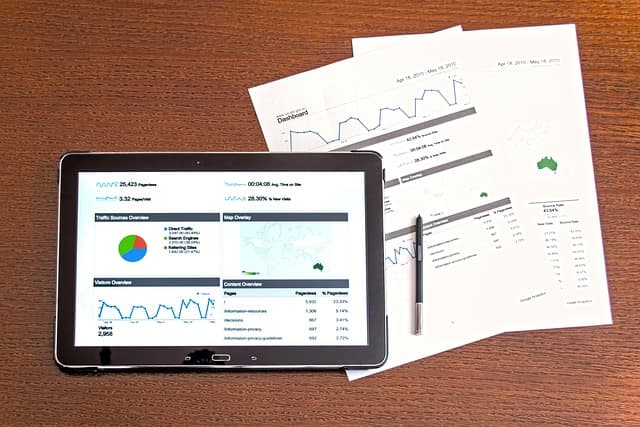Congestion Pricing and Bus Speed Improvements: What the MTA’s New Data Shows

In the latest update from the MTA, signs point toward real progress from New York City’s congestion pricing pilot program. With more money coming in and city buses moving more efficiently, there’s now more clarity on how this approach is shaping public transit. If you’ve noticed shorter bus wait times or smoother rides recently, it’s not just your imagination. The MTA’s latest numbers reflect a shift. Whether you ride regularly or are just trying to keep up with transit updates, here’s what you need to know. And while some funding issues still hang over future capital projects, the progress being made on travel times is worth paying attention to. By the way, if you’re also curious about entertainment during your commute, many are checking out the best casino not on GamStop—but let’s get back to the streets of New York.
Faster Buses Are Becoming a Reality
The MTA’s bus system, often criticized for delays and congestion, is finally showing measurable improvements. According to the latest data, bus speeds are up by 4% across the system. On routes like the M42, M50, and Q32, the gains are even more noticeable. These improvements aren’t just numbers on a spreadsheet—they’re helping real people get to work, school, or appointments faster. The agency is also considering schedule changes to reflect these improved conditions. The reduction in bus bunching means you’re less likely to wait ages and then see two or three buses arrive at once. For many, this makes commuting by bus more reliable and less frustrating. If you use the same routes every day, these small changes can have a big impact on your time and stress levels.
Congestion Pricing Is Paying Off
In February alone, the MTA collected $51.9 million through its congestion pricing program. That’s $3.3 million more than what was collected in January. This steady increase shows that the program isn’t just holding—it’s growing. Congestion pricing is designed to reduce traffic and encourage public transit use by charging drivers a toll for entering busy areas. The early results suggest it’s doing what it was meant to do. Less traffic means buses move faster, and the city becomes more manageable for everyone who doesn’t drive. For the MTA, the money helps fund services and cover long-term infrastructure work. If you’re someone who relies on public transit, these tolls might be helping more than you think—even if you’re not the one paying them.
Capital Funding Still Needs Attention
Even with the success of congestion pricing, the MTA’s larger capital plan is still facing a big financial gap. Right now, there’s a $30 billion hole in the plan that needs to be filled. This money is critical for ongoing upgrades like signal modernization, station repairs, and new subway extensions. Without it, there’s concern that the system could fall behind again, and service disruptions could return. MTA Chairman Janno Lieber is heading to Albany to push lawmakers for more state support. The goal is to secure money through the upcoming state budget process. If you remember the “summer of hell” with delays and shutdowns, the agency wants to avoid anything like that in the future. But without more funding, the risk is real.
Bus Riders Are Benefiting First
Among all public transit users, bus riders are currently seeing the most direct benefit from reduced congestion. The MTA noted that not only have travel speeds gone up, but the consistency of service has also improved. This means more even spacing between buses and fewer surprises. It’s a win for those who don’t have the subway as a reliable option—or who live in parts of the city where buses are the main mode of transport. If you’re someone who’s often frustrated by uneven wait times or packed buses, these changes can make a noticeable difference in your daily life. The MTA is continuing to look at additional improvements, but for now, the data shows real progress where it matters most.
Pilot Program Shows Promising Results
The congestion pricing pilot, launched in mid-February, is showing early success. Bus speeds are up, ridership is steady, and revenue is increasing. This pilot is being used to test how tolling changes travel behavior and system performance. The MTA is also evaluating how to adjust time points and schedules to better reflect traffic conditions. If buses are moving faster, the schedules can be updated to reduce overall trip times. The results from just a few weeks of data collection are already helping guide these adjustments. While more time is needed for a full picture, it’s clear that the pilot isn’t just a test—it’s already delivering change.
What Happens Without More Investment
Without additional capital funding, the gains made through congestion pricing might not last. The MTA’s leaders are warning that unless the state steps in to help close the $30 billion gap, critical projects could be delayed or canceled. This includes projects like the Second Avenue Subway extension and signal upgrades that are key to keeping the system reliable. Service issues could increase again, and the risk of another “summer of hell” becomes more real. For regular commuters, this could mean longer waits, more breakdowns, and fewer upgrades. The MTA hopes that new funding will allow them to keep pushing forward, but time is running out.
More Efficiency on the Way
As the MTA sees improvements in bus performance, it’s also looking at how to remove unnecessary delays in the schedule. With less congestion, some buses can run ahead of schedule, which creates bunching. By removing some time checkpoints or adjusting layovers, the agency hopes to streamline service. These changes are being studied carefully to avoid causing other issues. Still, this effort shows how the MTA is using real-time data to make smarter decisions. If you’re someone who’s been burned by inconsistent service before, this might feel like a long-overdue shift toward better planning and better outcomes.
Every Dollar Helps—And It Adds Up
From the $51.9 million collected in February, $78 million will be set aside into a “lockbox” reserved for capital projects. This kind of dedicated money is crucial. It guarantees that money earned through congestion pricing will go toward fixing and improving the transit system, not just covering operating costs. Over time, this lockbox can fund big repairs, new train cars, and upgraded stations. Every toll payment, even if small on its own, adds up to something larger that benefits the whole city. You may never see a receipt for how your commute gets better, but these kinds of programs are how the system gets the money it needs to grow.
A City That Keeps Moving Forward
Rotating plans, shifting budgets, and complicated infrastructure challenges make public transit tough to manage. But what we’re seeing from the MTA lately is that even small changes—like tolling or pilot programs—can have ripple effects. Buses are faster, streets are a bit less clogged, and there’s at least a framework for more stable funding. While there’s still uncertainty ahead, these early wins show what’s possible. If lawmakers provide what’s needed, the city might avoid another breakdown and instead keep moving forward—one route, one plan, and one rider at a time.




